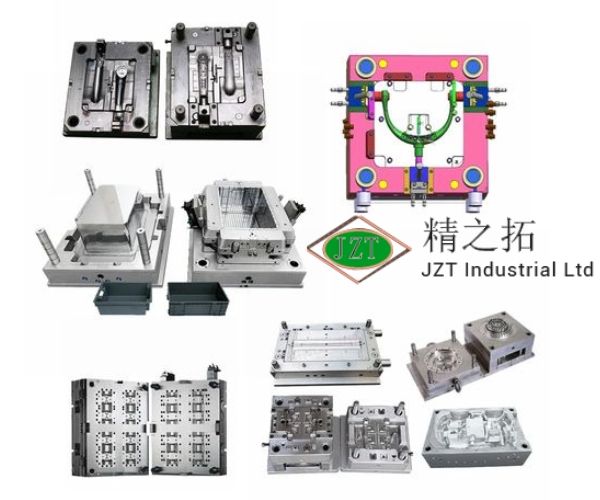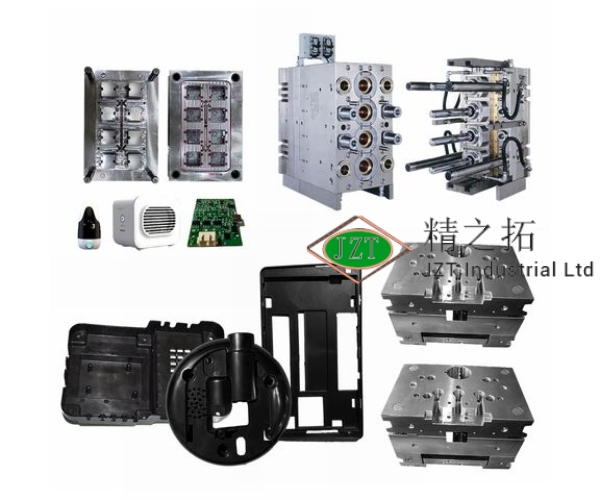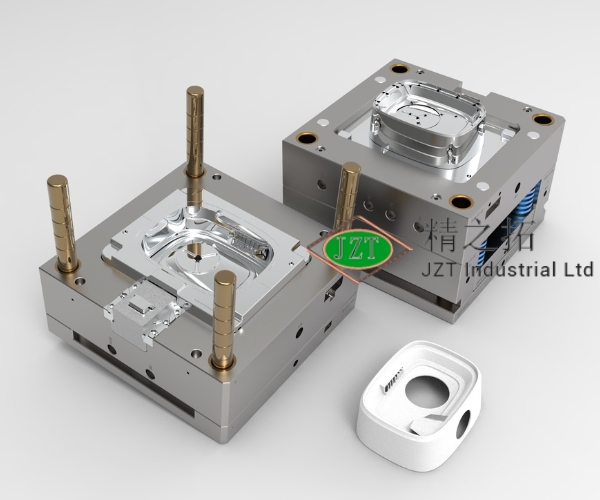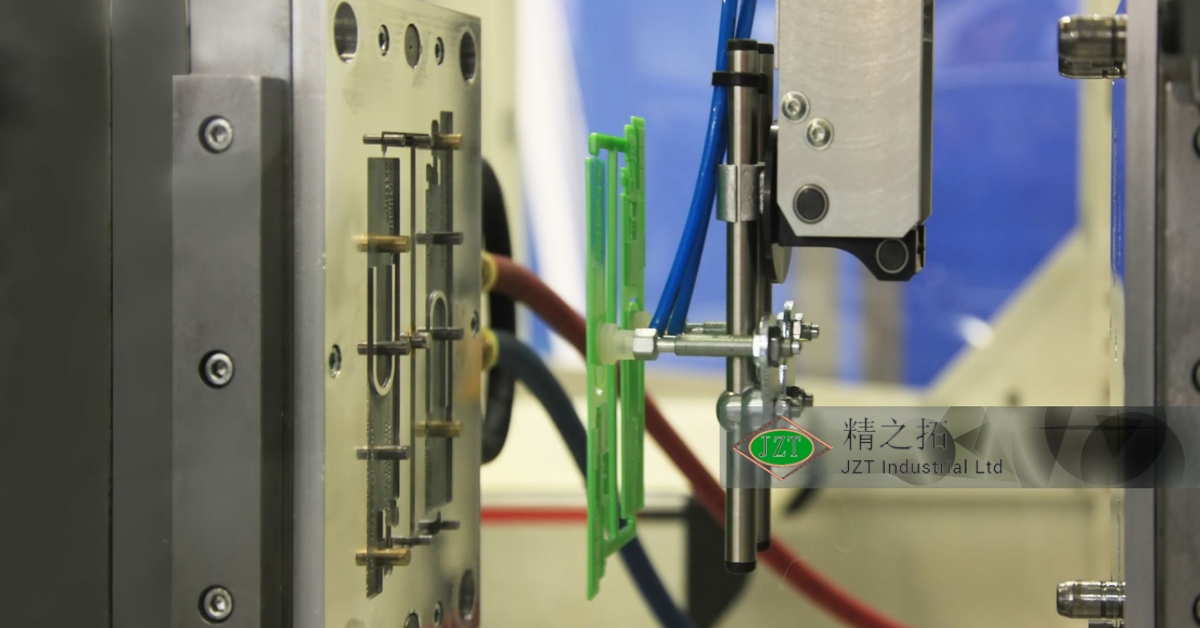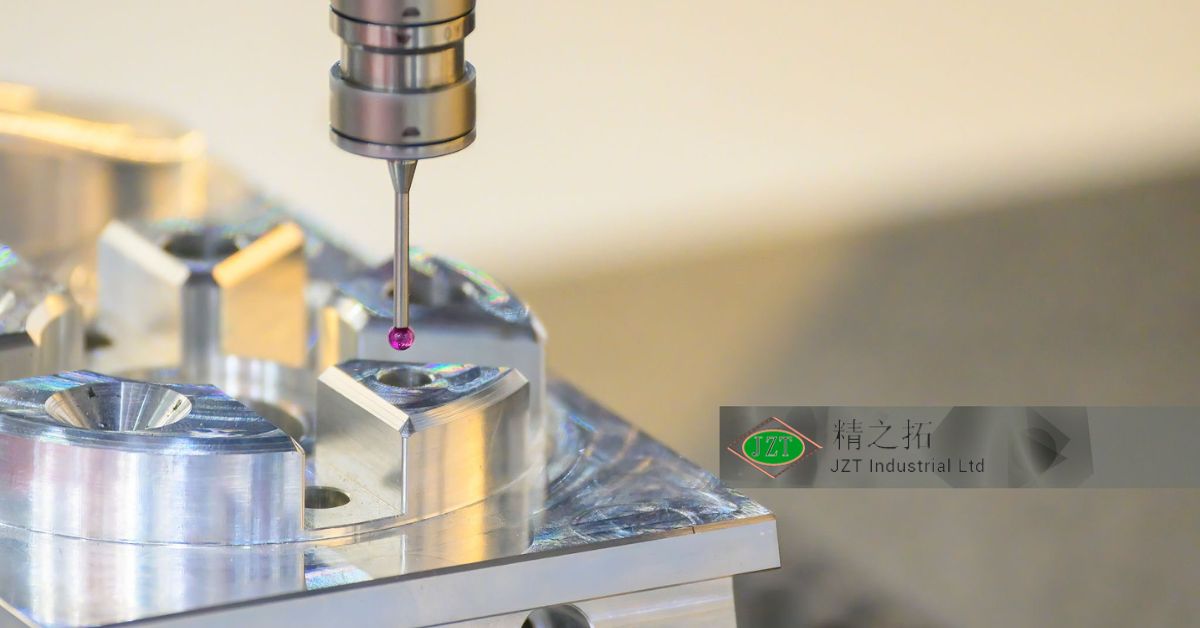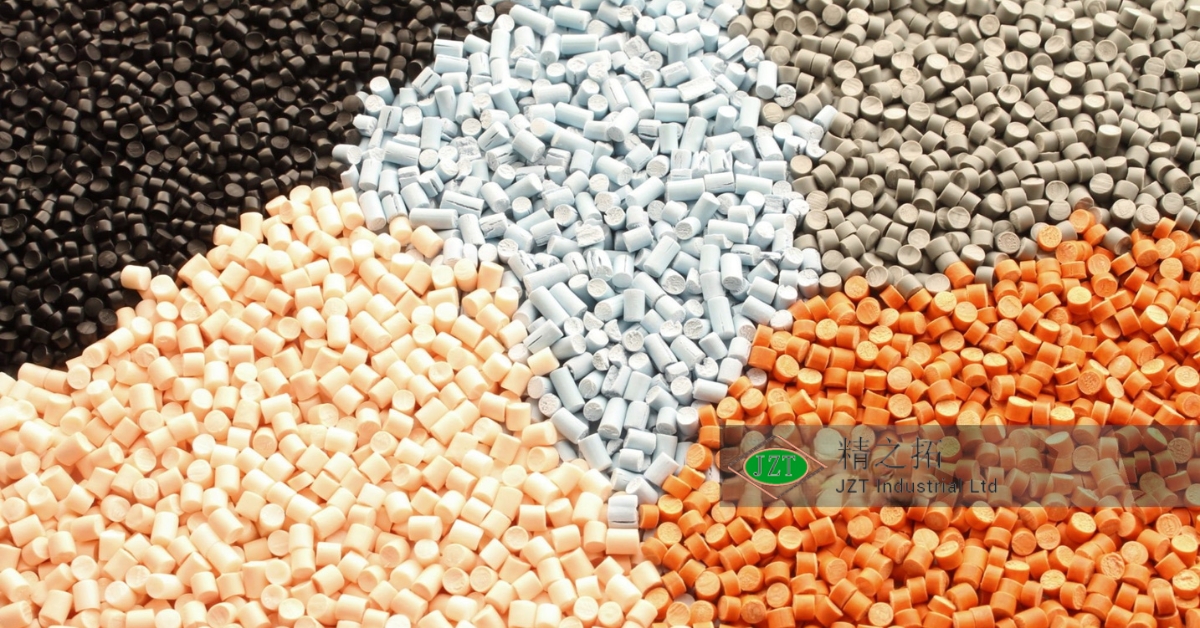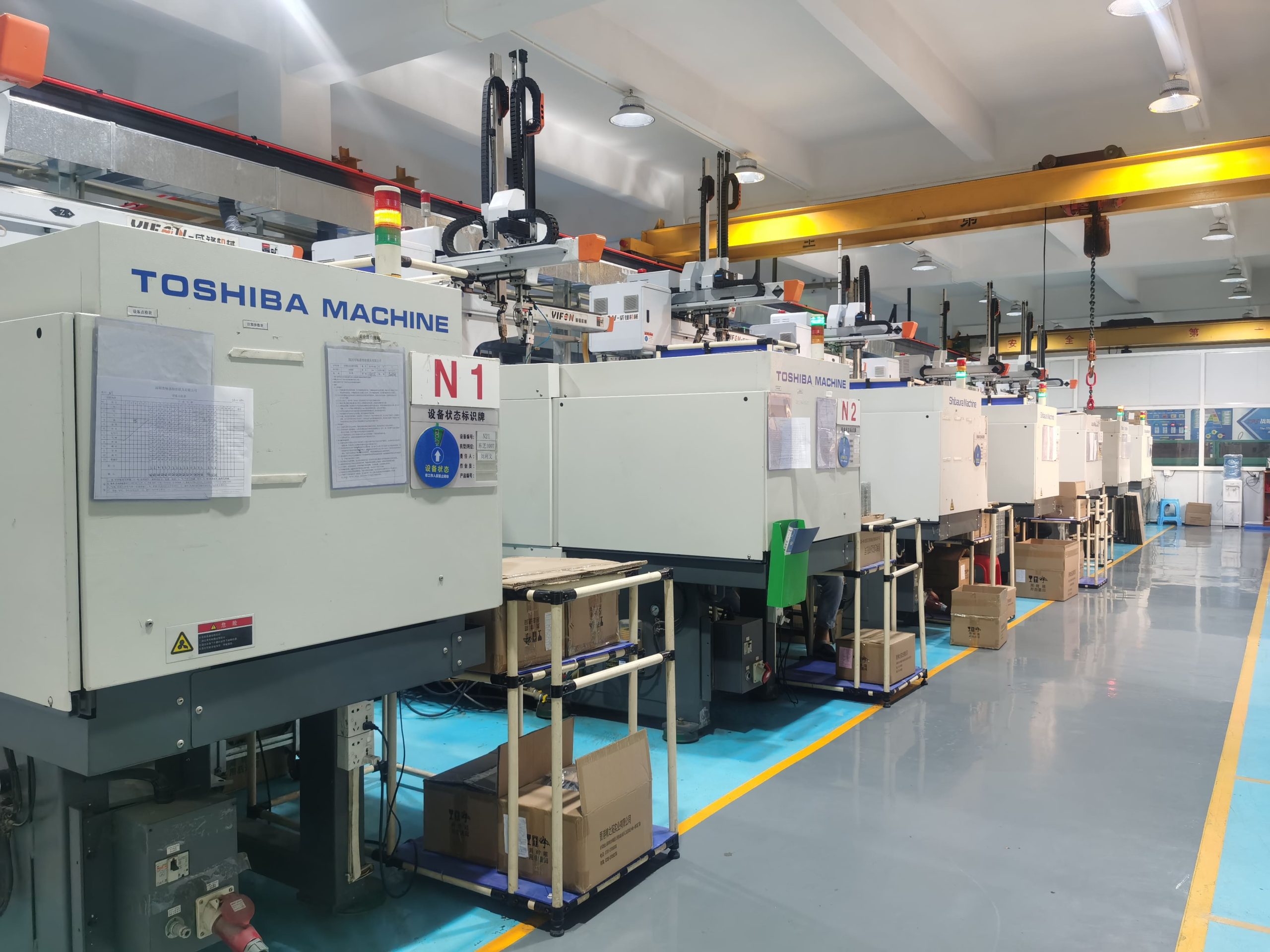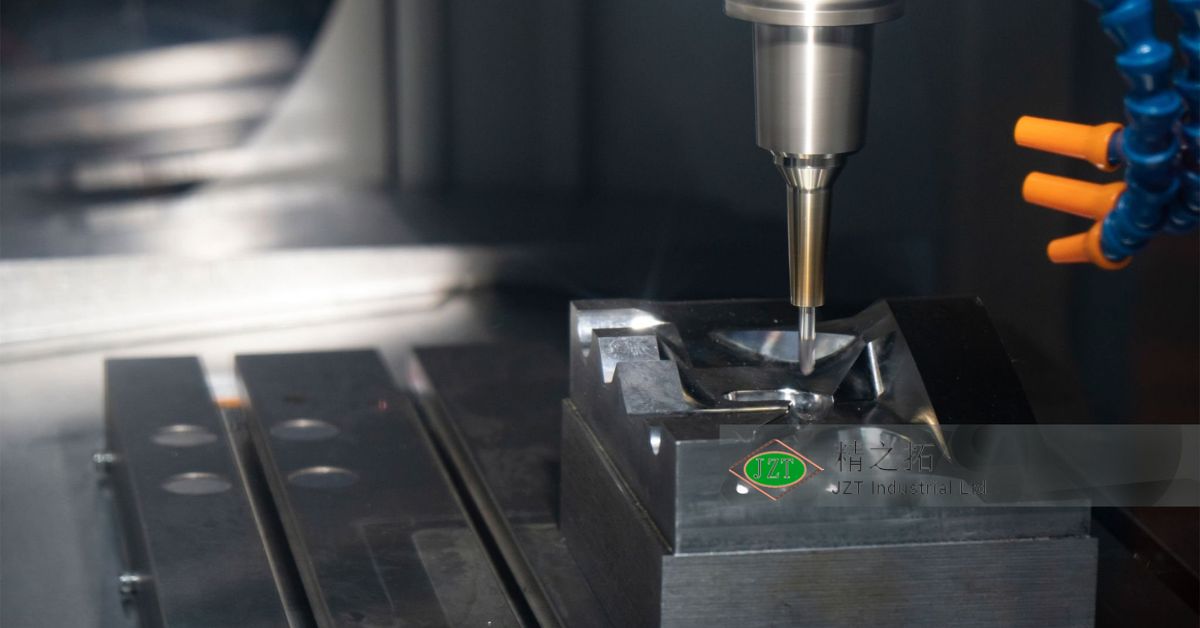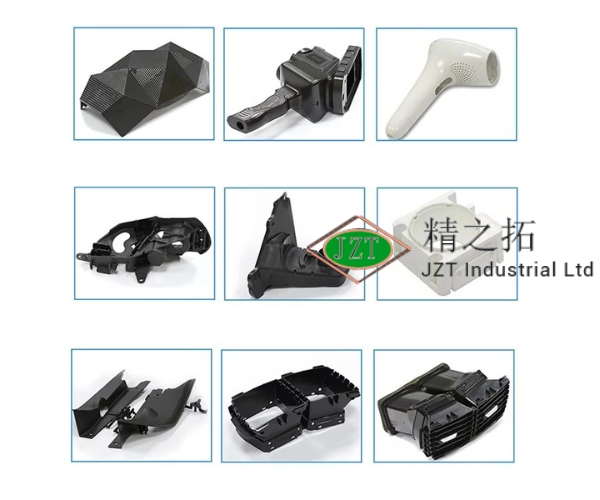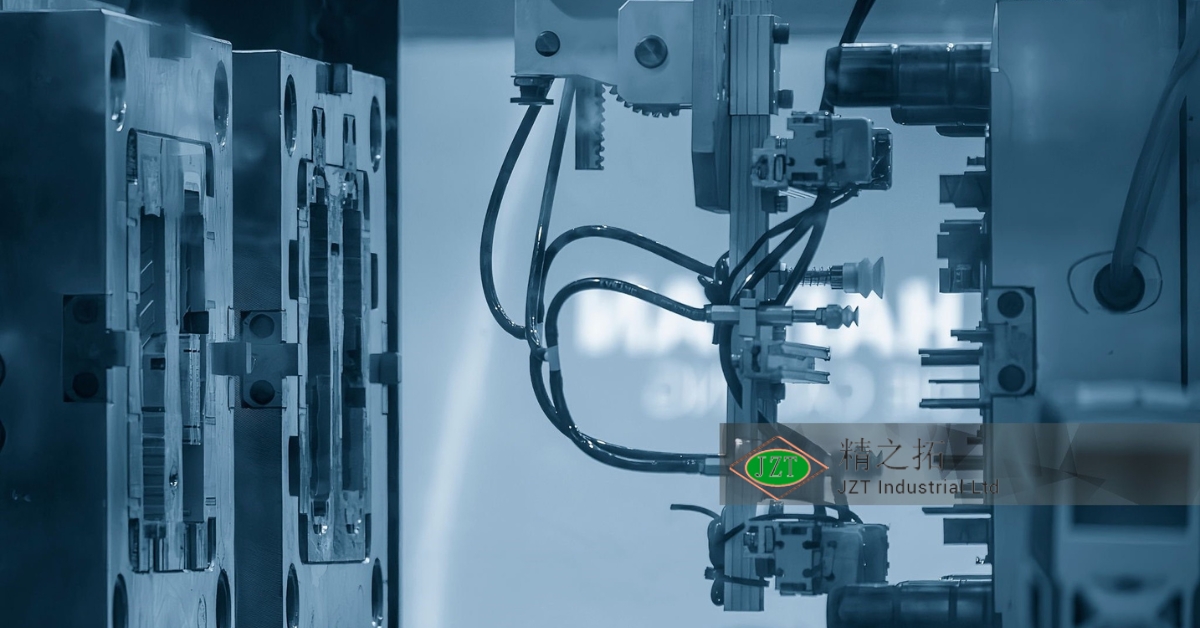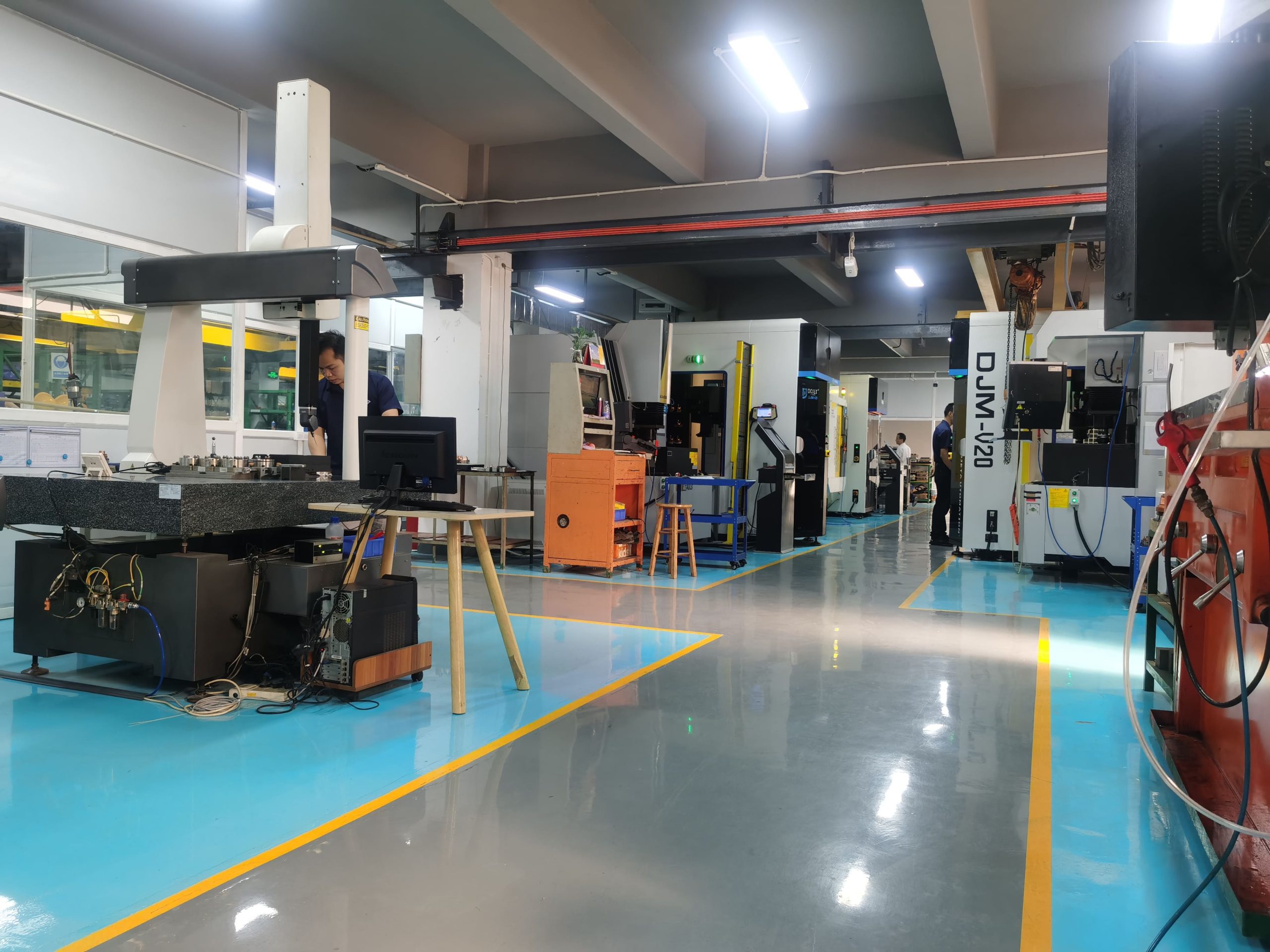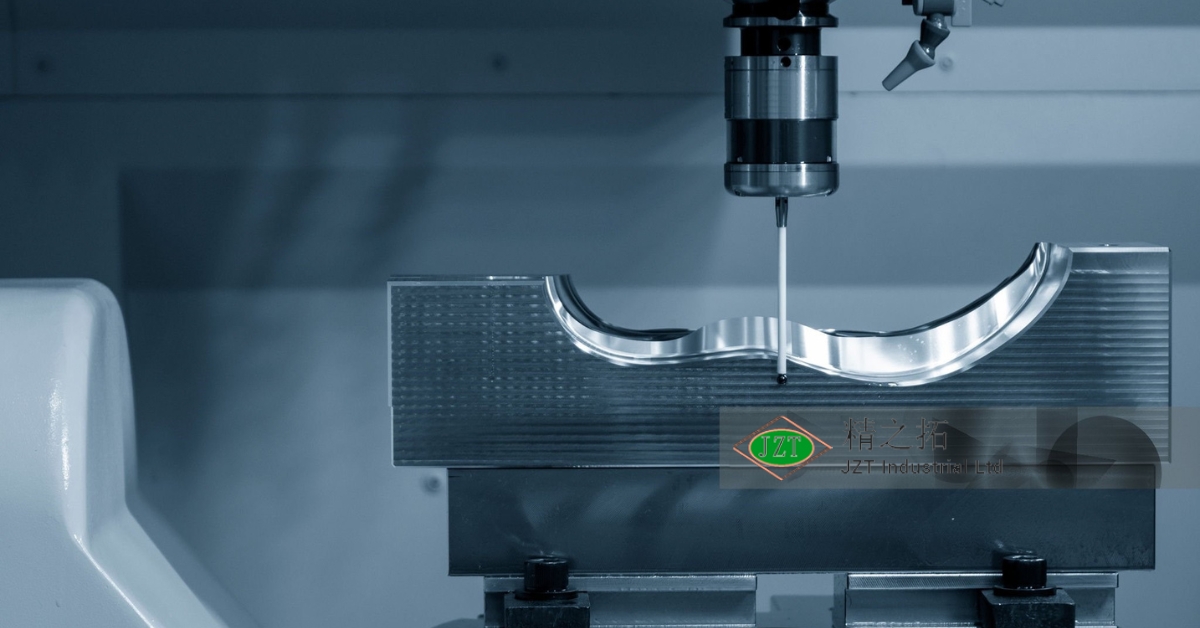導入
For industries requiring large quantities of high-quality plastic components, injection molding offers an efficient and scalable solution. However, achieving cost-effective injection molding solutions for high-volume production involves strategic planning, as production costs can add up quickly without the right approach. With increasing global demand, manufacturers across automotive, medical, electronics, and consumer goods sectors are seeking ways to reduce costs without sacrificing the quality and reliability of their products.
In this article, we’ll examine key strategies to minimize expenses in high-volume injection molding, focusing on optimizing mold design, selecting cost-effective materials, increasing production efficiency, and implementing automation. By the end, readers will gain actionable insights on making injection molding both affordable and effective for high-volume projects.
What is High-Volume Injection Molding?
High-volume injection molding is a manufacturing process that produces large quantities of identical plastic parts. Typically, high-volume production refers to runs of thousands or even millions of parts, making this technique ideal for industries where consistent quality and scalability are essential. The process starts with melting plastic material, which is then injected into a mold cavity designed to shape the molten plastic into the required part. Once cooled and solidified, the part is ejected from the mold, and the cycle repeats.
Differences Between Low-Volume and High-Volume Production
High-volume injection molding differs significantly from low-volume production, where smaller quantities of parts are made. In low-volume production, tooling costs can be managed more flexibly, and lead times are typically shorter. However, high-volume production requires durable molds made from high-strength materials, as they must withstand repeated cycles without compromising the precision or quality of each part. Additionally, cycle time optimization becomes critical in high-volume production to ensure each part is manufactured as quickly as possible, reducing costs per unit. Because of these demands, achieving cost-effectiveness in high-volume production requires a different approach than low-volume runs.
Why Choose Injection Molding for High-Volume Production?
Injection molding is ideal for high-volume production due to its efficiency, scalability, and repeatable quality. It enables manufacturers to produce complex shapes with tight tolerances, ensuring that every part meets the same exact standards. Unlike processes such as CNC machining or 3D printing, injection molding offers lower costs per unit as production volume increases, making it a practical choice for mass production. Additionally, injection molding supports a wide range of materials, allowing companies to select materials that meet their specific performance and cost requirements.
By leveraging these advantages, manufacturers can meet large-scale demands while keeping costs under control, making injection molding a preferred choice for many industries in need of custom plastic parts for high-volume applications.
Factors Affecting the Cost of Injection Molding for High-Volume Production
When scaling up production, several factors directly impact the overall costs of injection molding. Understanding these elements allows manufacturers to strategically manage expenses while maintaining quality and efficiency.
材料の選択
The choice of material is one of the most significant factors affecting the cost of plastic injection molds. Different plastics vary in price and properties, and the right selection depends on the intended application of the part. Common materials used in high-volume injection molding include polypropylene, polycarbonate, ABS, and nylon, each chosen for specific characteristics like strength, flexibility, or heat resistance. For instance, polypropylene is affordable and suitable for items that need flexibility and chemical resistance, while polycarbonate offers impact resistance and is often used in applications where durability is paramount.
However, high-performance materials such as PEEK or medical-grade resins are more costly and may not be necessary for every application. Balancing performance needs with material costs is key in achieving cost-effective injection molding solutions. Consulting with material experts can help in selecting a cost-effective resin that meets both durability and budget requirements for high-volume production.
金型設計の複雑さ
Mold complexity plays a critical role in determining initial tooling costs. Complex designs with intricate details, tight tolerances, or multiple parts require advanced tooling that may be more expensive to produce. For instance, molds with undercuts or threads need additional design features like lifters or slides, which can increase both the cost and lead time for mold production. Additionally, complex designs may lead to longer cycle times, as intricate parts can take longer to fill and cool.
To minimize costs, simplifying the part geometry where possible is beneficial. By reducing unnecessary design elements, manufacturers can save on tooling expenses and potentially shorten the cycle time. Early collaboration between design engineers and mold makers can help strike the right balance between achieving the necessary functionality and keeping mold costs manageable.
Cycle Time and Production Efficiency
In high-volume production, the cycle time—the duration of each molding cycle—is directly tied to per-part costs. The faster each cycle can be completed, the more parts can be produced in a given time, reducing costs per unit. However, cycle time is affected by factors such as mold design, cooling time, and material properties. High-density plastics, for example, may require longer cooling times, which can slow down the overall production rate.
To optimize cycle time, manufacturers can employ advanced cooling techniques, such as conformal cooling channels within the mold. By ensuring efficient heat dissipation, these channels help parts cool more quickly and allow for a shorter cycle time. Investing in cycle time optimization is essential for high-volume production, as it has a substantial impact on overall cost-effectiveness.
Labor and Automation in Injection Molding
Labor costs are another important factor in high-volume injection molding, particularly in settings where manual processes are still prevalent. While manual labor may be feasible for low-volume runs, high-volume production benefits significantly from automation. Automated systems, including robotic arms and real-time monitoring, reduce the need for human intervention, lower labor costs, and improve consistency in quality. Robotics can handle repetitive tasks, such as part extraction, quality checks, and assembly, freeing human workers to focus on more complex or value-added tasks.
Integrating automation into the production process can lead to substantial long-term savings, especially in high-volume manufacturing. It also enhances productivity, reduces errors, and helps maintain consistent part quality across large production runs, making it an essential component of cost-effective injection molding solutions.
Cost-Saving Strategies in Injection Molding
For companies aiming to maximize cost-efficiency in high-volume injection molding, implementing a range of strategies can help control expenses without compromising quality. Here are some of the most effective approaches.
1. Optimizing Mold Design for Cost-Effectiveness
An optimized mold design can lead to significant savings over the lifespan of a production run. By simplifying part geometry and focusing only on essential design features, manufacturers can reduce mold complexity, lowering both initial tooling costs and ongoing maintenance expenses.
Simplify Part Geometry
One of the simplest ways to lower costs in injection molding is by reducing unnecessary complexity in the part’s design. Extraneous features not only increase mold costs but can also extend cycle time and add to the likelihood of defects. Streamlined designs lead to faster cycle times and reduce the chances of needing costly mold modifications later in production.
Multi-Cavity Molds for Higher Output
Multi-cavity molds are another effective solution for high-volume production. By producing multiple parts in a single cycle, multi-cavity molds increase output and reduce per-part costs. While they require a higher upfront investment, the long-term savings in production time and efficiency can quickly offset these initial expenses, especially in high-volume settings.
Modular and Family Molds
Using modular or family molds allows for different parts to be produced simultaneously in a single mold. This approach is particularly useful for producing sets of parts that belong to a single assembly. Family molds allow manufacturers to save on tooling costs and cycle times by consolidating production for related parts, offering a more cost-effective approach than producing each component separately.
2. Choosing the Right Material for High-Volume Production
Selecting a material that aligns with the product’s requirements without exceeding them is crucial in controlling costs.
Balancing Cost and Material Performance
High-performance plastics are not always necessary; selecting a material that meets the minimum requirements without unnecessary qualities can yield substantial savings. For instance, if a product does not need to withstand extreme temperatures or high impact, choosing a mid-grade plastic like ABS or polypropylene may be more economical than opting for high-grade engineering plastics.
Alternatives to Expensive Resins
Where appropriate, recycled materials or blended plastics can also reduce costs. Many custom plastic parts manufacturers offer recycled resins that provide similar performance at a reduced price. Additionally, bio-based plastics or sustainable alternatives may offer cost benefits, especially as sustainable materials continue to develop and decrease in price.
Recycled Materials and Sustainability
Using recycled materials not only lowers costs but also aligns with sustainable manufacturing goals. This approach is particularly beneficial in industries where environmental responsibility is valued, as it reduces waste and promotes circular manufacturing processes.
3. Reducing Cycle Time and Increasing Efficiency
Shortening cycle times can drastically impact production efficiency, especially in high-volume runs.
冷却時間の最適化
Cooling time is one of the most time-consuming steps in the injection molding cycle. Optimizing this phase can be achieved by using advanced cooling systems or materials with higher thermal conductivity for the molds. Techniques such as conformal cooling, where channels within the mold are optimized to improve heat removal, allow for faster cooling and shorter cycles, contributing to cost-effective production.
Cycle Time Reduction Techniques
Reducing the time it takes to inject, cool, and eject parts is crucial in high-volume production. Besides using advanced cooling, injection parameters can be fine-tuned to achieve optimal material flow, ensuring parts are molded quickly without defects. Maintaining a consistent cycle time helps keep production predictable and cost-efficient.
Investing in Efficient Machinery
Although it may involve a significant initial expense, investing in high-efficiency machinery often leads to cost savings over time. Advanced machines with faster cycle times, better cooling options, and precise automation capabilities enhance production speed, reduce waste, and improve overall efficiency, all of which are crucial for achieving cost-effective injection molding solutions.
4. Implementing Automation and Advanced Technology
Automation enhances both the speed and consistency of injection molding operations, crucial for high-volume production.
Using Robotics in Injection Molding
Robots can manage tasks such as part removal, inspection, and packaging, reducing the need for manual labor and associated costs. Robotics also offer precise handling, which minimizes defects and allows for more consistent quality control. In addition, robots can perform operations around the clock, improving throughput in high-volume settings.
Real-Time Monitoring Systems
Real-time monitoring, often achieved through IoT-enabled systems, helps manufacturers keep a close watch on production parameters. By monitoring variables like temperature, pressure, and cycle time, manufacturers can detect issues early and make adjustments before they lead to significant defects or downtime. Real-time data collection also supports predictive maintenance, reducing the likelihood of unexpected equipment failure and associated costs.
Automation for Quality Control
Automated quality control systems, such as vision inspection, ensure that each part meets specifications, minimizing the risk of defective parts reaching the customer. By catching defects early, manufacturers can avoid costly recalls or rework, both of which can be highly detrimental in high-volume production.
Importance of Mold Maintenance and Management in Cost-Effective Production
Mold maintenance is essential for reducing unexpected costs and ensuring continuous, high-quality production. Regular maintenance helps prevent defects, reduces downtime, and extends the lifespan of the mold.
Regular Maintenance to Extend Mold Life
Injection molds undergo significant wear over time, especially in high-volume production. Regular maintenance, such as cleaning and lubricating moving parts, helps to keep the mold in optimal condition. Preventive maintenance allows for early detection of potential issues, reducing the risk of major failures that could disrupt production and lead to costly repairs.
Minimizing Downtime with Predictive Maintenance
Predictive maintenance uses data from production processes to forecast when a mold or machine may need attention. By identifying and addressing issues before they lead to breakdowns, predictive maintenance minimizes downtime and ensures smooth, uninterrupted production. This proactive approach is particularly valuable in high-volume settings, where any unplanned stoppage can significantly impact production schedules and profitability.
Quality Control and Mold Consistency
Consistent quality is essential for high-volume injection molding. Regular maintenance helps ensure that molds produce parts with uniform quality and dimensions, reducing the likelihood of part rejection and rework. Quality control practices, such as inspecting molds and parts regularly, help maintain consistency, prevent quality issues, and ultimately support a more cost-effective injection molding operation.
The Role of Partner Selection in Cost-Effective Injection Molding
Selecting the right injection molding partner can make a substantial difference in achieving cost-effective solutions for high-volume production.
Choosing the Right Injection Molding Manufacturer
A reliable injection molding partner should have the technical expertise, advanced equipment, and production capacity to handle high-volume projects. Manufacturers that specialize in custom plastic parts for large-scale applications can offer valuable insights into optimizing costs and ensuring quality. Look for partners with a proven track record in high-volume production and a commitment to maintaining high standards.
Evaluating Cost Transparency and Flexibility
Transparency in pricing and flexibility in meeting specific production needs are critical for successful partnerships. Reliable manufacturers will offer detailed cost breakdowns and be open about any potential additional expenses. Additionally, flexibility in adapting to design changes, production adjustments, or scale-ups is valuable, as it allows manufacturers to remain agile and responsive to market or design demands.
Benefits of Collaborating with Experienced Manufacturers
Experienced manufacturers often bring valuable insights into cost-saving opportunities, having dealt with various challenges in high-volume production. Their expertise can help streamline processes, identify areas where costs can be reduced, and implement strategies that optimize the entire production workflow.
Case Studies: Achieving Cost Savings in High-Volume Injection Molding
Real-world examples can provide valuable insights into how cost-saving strategies in injection molding can be applied to high-volume production across different industries. Here are a few case studies that highlight effective approaches to achieving cost-effective injection molding solutions.
Case Study 1: Reducing Costs for an Automotive Component Manufacturer
An automotive component manufacturer sought to reduce the per-part cost of a high-demand interior component. Initially, the company was producing the part using single-cavity molds, which resulted in extended cycle times and higher labor costs. By collaborating with an experienced plastic parts manufacturer, the company transitioned to multi-cavity molds, allowing multiple parts to be produced per cycle.
The switch to multi-cavity molds not only doubled production output but also reduced cycle time per unit, lowering the overall cost. In addition, automated part removal and inspection systems were implemented, reducing the need for manual labor and further decreasing production costs. By optimizing the mold design and introducing automation, the company achieved a significant reduction in manufacturing costs while maintaining the quality required for the automotive industry.
Case Study 2: Optimizing Medical Device Production with Modular Molds
A medical device company required custom plastic parts for a range of diagnostic devices. Due to the high standards for precision and consistency in medical applications, the company faced substantial tooling costs and was seeking ways to reduce expenses while maintaining compliance with regulatory standards.
Working closely with a plastic injection molding partner, the company adopted modular molds, allowing multiple parts of the device to be produced in a single mold. This approach minimized setup time and reduced the cost of mold maintenance. Additionally, by selecting a durable yet cost-effective medical-grade material, the company was able to balance cost and quality without compromising on safety or durability. The streamlined production process reduced tooling expenses and provided a steady, reliable output for their high-volume needs.
Case Study 3: Electronics Manufacturer Using Automation for Cost Efficiency
An electronics manufacturer producing plastic casings for consumer devices needed a high-volume solution that would cut costs without sacrificing quality. Previously, the production line required significant manual labor, particularly for quality control, which increased labor costs and slowed down production.
The manufacturer invested in a robotic system that performed both part handling and quality inspection, significantly increasing throughput while maintaining consistency in part quality. The automation enabled 24/7 production, boosting output and reducing labor costs by 30%. By leveraging automation and advanced monitoring technology, the company achieved consistent quality at a lower cost, making it possible to meet market demand efficiently.
Environmental and Sustainable Practices to Reduce Costs in Injection Molding
As sustainability becomes increasingly important, adopting eco-friendly practices in injection molding not only benefits the environment but can also lead to cost savings. Here are some sustainable strategies that can reduce costs in high-volume production.
Using Sustainable Materials to Cut Costs
Incorporating recycled or bio-based materials is one way to reduce the cost of materials while supporting sustainable practices. Many custom plastic parts manufacturers offer options for recycled resins that perform similarly to virgin materials but come at a lower price. Recycled materials are especially cost-effective for non-critical applications where durability under extreme conditions is not necessary. Using these materials can help reduce raw material costs and align with environmental sustainability goals.
Reducing Energy Consumption in Production
Energy efficiency is a key factor in achieving cost-effective injection molding. Using energy-efficient machinery, such as all-electric injection molding machines, reduces power consumption and lowers operational costs. Additionally, optimizing the cooling process and reducing cycle times further minimizes energy use. Implementing energy-saving practices throughout the production process allows companies to decrease overhead expenses while reducing their carbon footprint.
Waste Reduction and Recycling Programs
Injection molding can produce waste, especially in the form of excess plastic from sprues and runners. However, by implementing recycling programs, manufacturers can reprocess this waste material, reducing the need for new raw materials and lowering production costs. Recycling programs not only support sustainability but also promote circular manufacturing practices that can improve efficiency and cut costs in high-volume production.
FAQs on Cost-Effective Injection Molding for High-Volume Production
1. What are the main factors that influence the cost of injection molding?\
The primary factors that influence injection molding costs include material selection, mold design complexity, cycle time, and labor or automation. Adjusting these factors strategically can help reduce costs, especially in high-volume production.
2. How can automation help reduce costs in high-volume injection molding?\
Automation minimizes the need for manual labor, speeds up production, and ensures consistency in quality. By automating repetitive tasks like part handling and quality inspection, companies can achieve faster production rates and reduce labor-related expenses.
3. Is it possible to use recycled materials without sacrificing quality?\
Yes, many recycled resins meet industry standards for performance and durability. In applications where extreme durability is not essential, recycled materials provide a cost-effective and eco-friendly alternative to virgin plastics.
4. What role does mold design play in reducing production costs?\
Mold design affects cycle time, tooling costs, and maintenance requirements. Simplifying the part geometry, using multi-cavity or family molds, and optimizing cooling channels are all ways to reduce costs associated with mold design.
5. How often should molds be maintained for optimal performance?\
Mold maintenance schedules depend on the production volume and material used, but regular maintenance is crucial in high-volume settings. Preventive and predictive maintenance can extend mold life, reduce downtime, and ensure consistent part quality.
結論と最終勧告
Achieving cost-effective injection molding solutions in high-volume production requires a combination of strategic material selection, efficient mold design, optimized cycle times, and automation. By implementing these strategies, manufacturers can lower per-unit costs without compromising on quality, making injection molding an ideal choice for industries that demand large quantities of plastic parts.
Manufacturers aiming to enhance cost efficiency should also consider sustainable practices, such as using recycled materials and energy-efficient machines, to further reduce expenses while supporting eco-friendly goals. Lastly, selecting the right manufacturing partner with expertise in high-volume injection molding is crucial to ensure cost transparency, flexibility, and quality.
If you’re looking to reduce production costs and achieve efficiency in high-volume injection molding, consider consulting with experienced custom plastic parts manufacturers who can offer tailored solutions to meet your specific needs.

